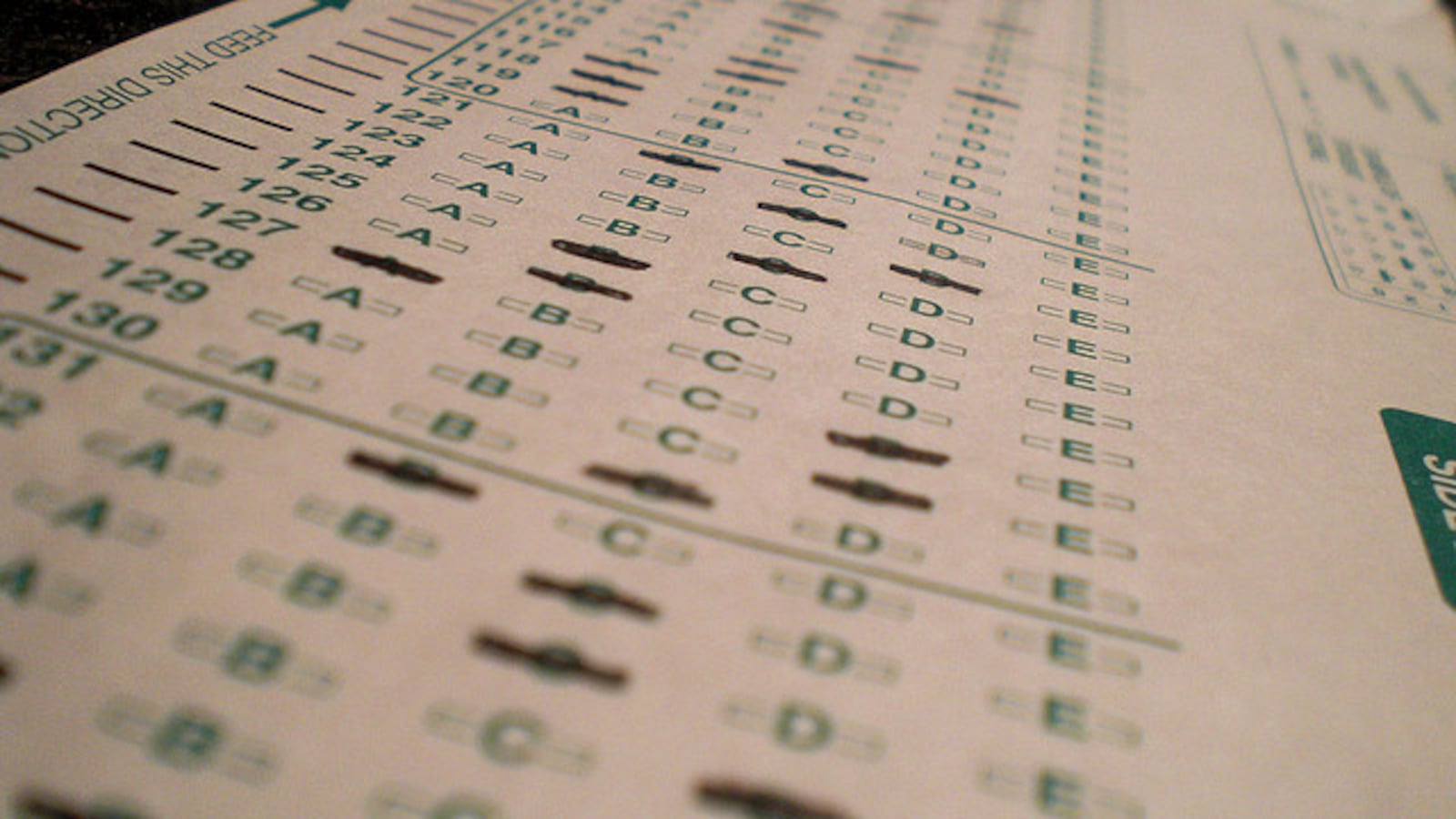When a test proctor signals that it is the last few minutes of an exam, chances are some students will begin to scramble.
That dynamic, educators say, prevents students from demonstrating their true skills on the state’s annual reading and math tests. One New York City teacher even made that argument to Gov. Andrew Cuomo’s testing task force last fall.
Stay updated on New York City education news with our daily and weekly newsletters. Sign up here.
Last month, State Education Commissioner MaryEllen Elia signaled that she agreed. She announced that students will have all the time they need to complete state exams this spring, as long as they are “productively working.”
While the move failed to impress leaders of New York’s strong parent anti-testing movement, it appears to be resonating more with educators, who say students will do better when they don’t feel crunched for time.
“My students get so frustrated when they don’t finish the exam,” said Priyanka Katumuluwa, a special education language arts teacher at New Heights Middle School in Crown Heights, Brooklyn. “Anything we can do to ease the pressure and make them feel comfortable,” she added, “can go a long way for how they feel and perform.”
But in other parts of the country, untimed standardized tests are not new or unusual. Researchers who study testing and the experiences of other states suggest that doing away with time limits is unlikely to have a substantial effect on student performance or state of mind.
“We started to administer untimed tests about 20 years ago,” said Jeff Wulfson, the deputy commissioner of Massachusetts’ department of elementary and secondary education. “We decided to give students as much time as they need to demonstrate what they know.”
California, Missouri, and a handful of other states have also administered untimed tests for over a decade. That makes sense, because state tests typically do not require time limits to get useful information about students’ skills, according to researchers who study test design.
Andrew Porter, the former dean of the University of Pennsylvania’s Graduate School of Education, says tests can be classified as “speeded” or “power” tests. Most state tests are “power” tests constructed to give students enough time to show what they know, he said.
Indeed, responsible test producers pilot questions in advance so they put together an exam that most students can complete in the allotted time, according to Doug McRae, a retired psychometrician at McGraw-Hill, which produces tests for multiple states. McRae created both timed and untimed tests and said he found that unlimited time fundamentally has no effect on a student’s score.
The transition to the Common Core reset some of that careful calibration. During the first year of Common Core testing in New York, many educators said the state’s exams asked students to do too much in too little time.
Teachers have argued that time limits on state tests undermine the goals of the Common Core standards, which require student to conduct thorough analyses of texts to form arguments about elements such as author’s purpose or theme. But with the the time allotted for testing, students are only able to graze the surface of passages, some teachers say.
Katumuluwa weaves pacing recommendations into her lessons to help students remember that time is a factor. “I’ll remind them to read the passage at a pace that gives them the right amount of time to get through the questions,” she said.
And a number of her students in special education, who receive double-time, work up to the last minute. “Unlimited time is even a better option than double-time,” said Katumuluwa. “It would eliminate the crunch and put my students at ease. Plus, they would get the chance to actually check their work or give tougher problems a second try.”
But McRae said other forces are at play when it comes to anxiety. “The pressure students experience comes less from the fact that the test is timed and more from the kind of pressure they experience from the stakes that are at risk,” he said. “They know the tests are being used to qualify them for graduation and for various programs.”
City and state officials in New York have also moved to reduce the consequences of state test scores. The scores won’t factor into teachers’ official evaluations for years, and New York City has stopped holding students back on the basis of test scores alone.
That leaves some educators believing that the greatest impact of the timing change might be on the way testing days work.
“This elimination of timing is going to create a logistical nightmare for the school administration and distractions for those taking the test while others zip through and become restless,” city teacher Madalaina Balzano-Vellucci wrote on Facebook.
The logistical issues cut both ways, said Wulfson, the education official in Massachusetts. Some districts there just completed field testing rounds of PARCC, a timed test aligned to the Common Core standards.
“We are experimenting with timed tests now,” Wulfson said. “We’ve received mixed feedback. A lot of our educators are pleased that it took less time and that instruction didn’t need to completely stop, while others felt some pressure because timed tests aren’t something we are used to.” But most students reported having enough time to finish the test, he said.
In New York, some teachers believe the benefits of untimed tests outweigh the costs.
“The testing time provided is out of touch with our kids. The allotted time only serves a small population of our students,” said Katumuluwa.
And she said doing away with the dreaded end-of-test countdown could pay off in ways unconnected to students’ scores.
“While timing isn’t the only issue with these tests, our students will see that we are trying to work with them,” she said. “They will see it as an opportunity to make it through.”

